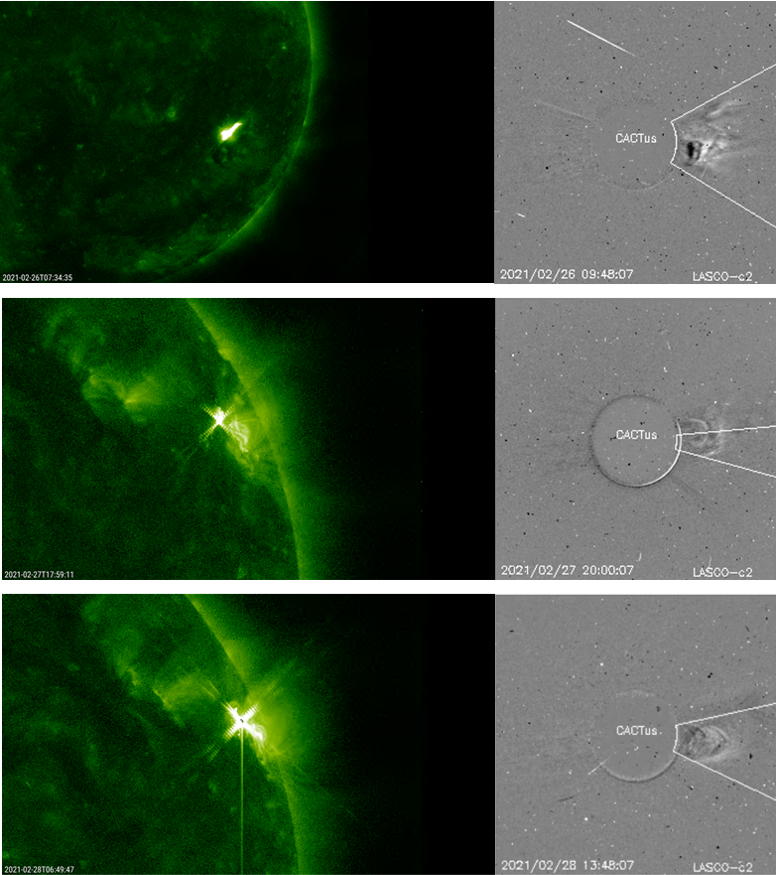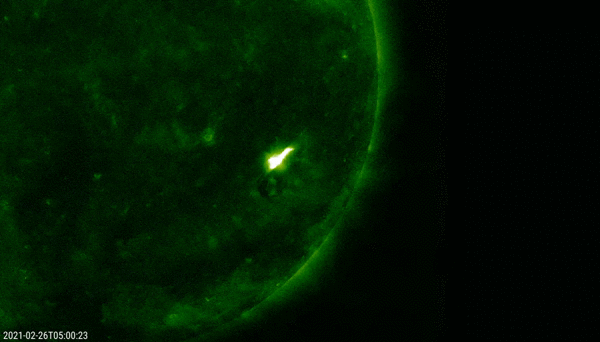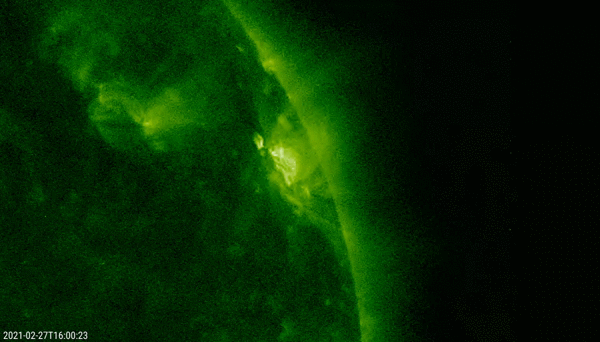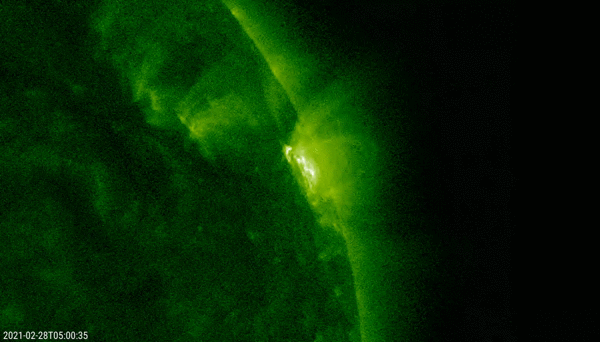Two sunspot regions were present on the solar surface this week: NOAA 2804 in the northern hemisphere, and NOAA 2805 in the southern hemisphere. Around 23 February, the regions had about the same size and magnetic configuration. NOAA 2805 then gradually decayed becoming spotless by 25 February. NOAA 2804 on the other hand evolved into a somewhat more complex group with a relatively big leading main spot, rounding the west limb late on 28 February. See the SDO/HMI imagery underneath.
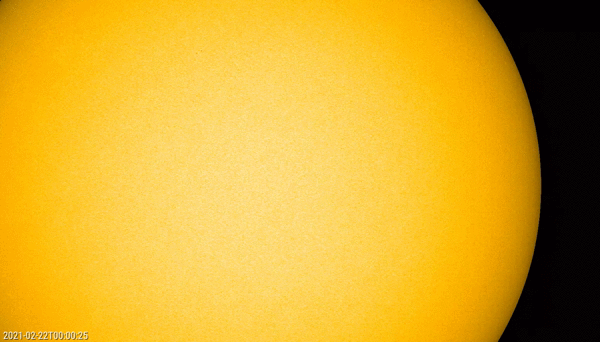
NOAA 2804 was also responsible for two C-class flares: a C2-event on 27 February, and a C3-flare a day later. Extreme ultraviolet (EUV) images show that the eruptions took place in the trailing portion of the group, and that they were associated with some coronal dimming and a coronal wave. The related coronal mass ejections (CMEs) were not directed to Earth (see the SOHO/LASCO C2 images by CACTus). NOAA 2805 was the source of a B9-flare on 26 February. Though also this CME did not seem to have an earth-directed component, the CME's potential contribution to the enhanced solar wind conditions and increased geomagnetic activity early on 1 March is still under debate.
